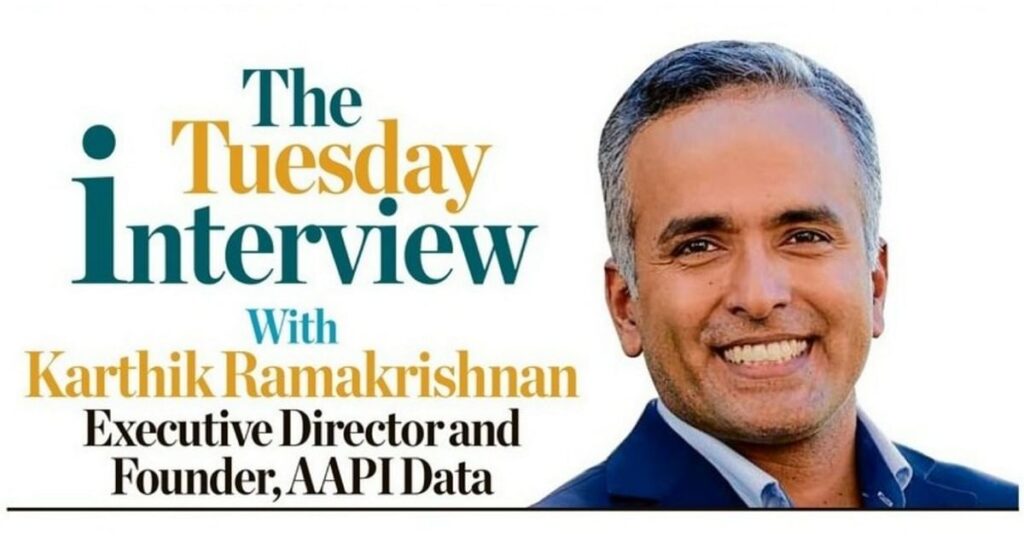The Rise of Indian Americans in U.S. Politics: A Closer Look
The 2024 U.S. presidential election is shaping up to be a historic moment, not just for the nation but also for Indian Americans (IAs). Vice President Kamala Harris, herself of Indian descent, is on the verge of securing the Democratic Party nomination to challenge former President Donald Trump. This event is drawing global attention and casting a spotlight on the increasing influence of Indian Americans in U.S. politics. In an exclusive interview, Karthik Ramakrishnan, Executive Director and Founder of AAPI Data, shared valuable insights into this phenomenon.
Historical Context and Progressive Climb
The presence of Indian Americans in the U.S. political landscape has been a remarkable journey, especially considering that significant migration didn’t occur until after 1965 due to restrictive visa policies. Numbers only began to swell post-1975 and saw a significant influx around the year 2000 due to the Y2K phenomenon.
Despite their relatively recent arrival, Indian Americans have outpaced numerous other immigrant communities in political engagement and achievement. Ramakrishnan attributes this to several factors:
-
Democratic Roots: Many Indian immigrants come from the world’s largest democracy, making them more inclined to participate in U.S. political processes.
-
Linguistic Advantage: Proficiency in English, acquired through their education and workplace, provides a considerable boost.
- Resource Availability: A significant portion of Indian immigrants arrive on employment-based or family visas, equipped with meaningful educational backgrounds.
These combined factors have laid a robust foundation for political involvement and ambition among Indian Americans.
Political Influence Despite Smaller Numbers
While the national Asian American vote is smaller than the Latino vote—nearly half its size—Indian Americans have become a decisive force in crucial states like Georgia and Pennsylvania. In these battleground areas, where Asian Americans comprise 2-3% of the electorate, their votes can swing tight elections.
Challenges Ahead for Kamala Harris
As Kamala Harris gears up for a 100-day campaign against Donald Trump, several challenges loom. Although closely associated with President Biden’s administration—both its achievements and shortcomings—Harris has been selectively positioned by the Biden camp for tough assignments, including immigration issues at the Mexican border.
Ramakrishnan points out that while Harris’ Californian liberal background may present hurdles, her association with a diverse, progressively-inclined electorate could also offer significant advantages. Furthermore, her candidacy may resonate positively, given America’s preceding acceptance of Barack Obama, another leader of diverse heritage.
The Democratic Inclination
Indian Americans have traditionally leaned towards the Democratic Party. While Trump made some inroads between 2016 and 2020, Biden saw a decline in support in 2024, with many IAs showing dissatisfaction. This drift is attributed more to discontent with Biden rather than a wholesale move away from Democratic principles. Younger generations and newly naturalized citizens continue to fuel Democratic support.
Paradoxical Political Views
Interestingly, many Indian Americans exhibit a paradoxical political stance—progressive in the U.S. but right-leaning when it concerns Indian politics. This duality often arises from distinct contextual understandings: the same individual advocating for minority rights in America may support policies perceived as nationalistic in India, spurred by an anti-corruption agenda.
Looking Ahead
As we move closer to the November elections, the role and impact of Indian Americans in U.S. politics cannot be overstated. Kamala Harris’ candidacy is not only a testament to their growing influence but also highlights the broader narrative of immigrant success and integration into American democracy.
For more information on demographic data and policy research concerning Asian Americans and Pacific Islanders, visit AAPI Data.
Published on 30 July 2024, 00:10 IST.
